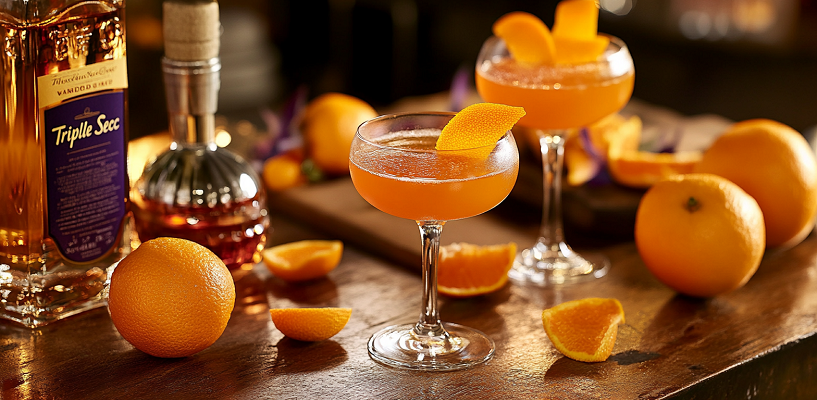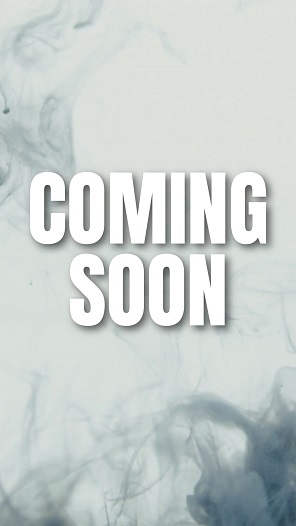- Home
- >>
- US
- >>
- Food and Drink
- >>
- Liqueur
- >>
- Triple Sec
Triple Sec

In French, the word “Sec” implies “dry.” Also, according to some hypotheses, “Sec” implies that in comparison to other orange liqueur varieties, Triple Sec is intended to be less ‘sweet.’
Originally, the term “Triple” referred to the three steps of the distillation process at 20-40°C. According to some hypotheses, “Triple” referred to the fact that Triple Sec is made from the distilled dried peels of ‘three’ citrus fruits: mandarins, sweet oranges, and “curaçao” (a bitter orange from the Dutch Antilles Island).
Sun-dried orange peels from ‘Haiti’ are used to make the “original” Triple Sec. Haiti is a nation situated in the ‘Caribbean Sea’ on the island of Hispaniola. After being sun-dried, the peels are flown to France from Haiti, where they are “macerated, distilled, and combined with additional ingredients” to create Triple Sec and the renowned liqueurs ‘Grand Marnier’ and ‘Cointreau.’
One of the most adaptable liqueurs, ‘Triple Sec’ may be used both as “an ingredient in cocktails” and as a mixer.
The following are some well-liked Triple Sec cocktails that you may probably see listed on menus at “pubs and restaurants”: Margarita, Cosmopolitan, Sidecar, The Kamikaze, Man o’War, Bourbon Ella, White Lady, Hammer with Velvet, Cable Car, Mai Tai, and Martini in Orange.
Triple Sec taste -
In its most basic form, Triple Sec is an orange-flavored liqueur. Triple secs can differ significantly from one another, on the basis of brands, in terms of “sweetness, bitterness, texture, and even quality.”
A better Triple Sec might taste very clear, brilliant orange flavor, and slightly sweet. The alcohol flavor is fairly noticeable and ‘the orange may taste a little bitter.’
A lower-end Triple Sec may taste extremely like ‘artificially orange’ and be excessively sugary. The flavor of this particular Triple Sec is less alcoholic and more sugared.
History of Triple Sec -
Combier Distillery -
The ‘Combier distillery’ (website “combier.fr”), asserts that it invented the Triple Sec in 1834, and is the oldest continuously operating distillery in the ‘Loire Valley, France.’ It is said to have been created for the first time in 1834 in a lone alembic still by “Jean-Baptiste Combier and his wife Josephine Destre” at the confectionery store.
The Dutch had ownership of ‘Curaçao,’ an island in the Caribbean, during the time 1834. Jean-Baptiste Combier had developed a method of distilling the peel from “citrus fruits” (that were frequently transported by barges on the Loire), probably motivated by his wife’s ‘family connections’ to the Dutch/Netherlands.
The Triple Sec recipe from history hasn’t changed at distillery. Orange peel is imported from the Caribbean. At the distillery, to restore the peel to its ‘initial condition,’ it is rehydrated in water for a whole day. Further, peel is manually zested. “Zesting” refers to the act of removing the peel’s outer layer, particularly the ‘nutritious, colorful’ layer that holds essential oils. In other words, the ‘ziste’ (the most bitter core layer) is isolated from the outside layer. Next, after being macerated in ‘neutral alcohol’ for a whole day, the zested rinds release their full aroma.
The first bottles of L’Original Combier Triple Sec were introduced to the US market in 2000, and Royal Combier and Elixir Combier soon after.
Currently, master distiller Franck Choisne buys peels from ‘Haiti’ and meticulously selects only the best raw materials, carrying on the Combier family legacy.
Cointreau -
‘Cointreau.com’ asserts that the Cointreau brothers’ recipe books contain “orange liqueur” for the first time in 1857, and Cointreau wins its first prize at the Laval Exhibition in France. ‘Adolphe Cointreau’ and ‘Édouard-Jean Cointreau’ are the Cointreau brothers.
Following years of study, Édouard Cointreau produced a crystal-clear liqueur in 1885 that was precisely balanced, “three” times more flavorful, and “less” sweet than other liqueurs at the time. Selected “fresh and dried” sweet and bitter orange peels were combined to create the liquor. Édouard Cointreau had registered the trademarks with the Commercial Court of Angers in 1885 for the ‘Cointreau brand’ (“Cointreau Triple Sec”) and its recognizable square bottle.
The sweet oranges (Citrus sinensis) are imported from “Ghana, Senegal, Brazil, and the Sevilla region of Spain.” Cadenera, Salustiana, Late Valencia, Pera, Washington, Sweet Mediterranean, and ‘a native Ghanaian variety’ are the main varieties. The bitter oranges (Citrus auriantium ssp. bigaradia) are imported from Brazil and Tunisia.
To extract the greatest scents from fresh sweet peels, they are ‘macerated’ in a hydro-alcoholic solution for many weeks before distillation.
Peels from “sweet oranges are also sliced into four-quarter segments” while from bitter oranges are paired into single ribbons. After that, the peels are ‘sun-dried’ for three to five days, or until they have an 11% moisture content. Following the peels’ drying, the distiller determines the “ratios” required to achieve the ideal aromatic balance.
Cointreau made its debut in the Americas in 1893 with a medal at the Chicago World’s Fair. With more than 170 years of experience and 300 medals gained since its establishment, Cointreau has been “awarded” three further distinctions.
- A Chairman’s Trophy score of 98 out of 100 in the “Ultimate Spirits Challenge.”
- Winner of the International Spirits Challenge Tasting Awards’ gold medal in liqueurs
- A silver medal from the “Bartender Spirits Awards, Fourth Edition.”
Currently, Brand “Cointreau L’ Unique” orange liqueur is formed with the original “Cointreau Triple Sec” recipe.
Triple Sec styles -
There are currently a lot of “Orange Liqueur, or Triple Sec,” alternatives on the market, and they usually fall into two styles. There is no ‘superior or more expensive’ style than another. Every style offers a distinct ‘flavor’ profile that will ultimately have a marginally different impact on the final cocktail’s taste.
Grand Marnier style -
Grand Marnier combines the cognac and Triple Sec so that the cognac can also add to the overall ‘flavor’ profile. A well-balanced and opulent flavor is produced by the aged cognac’s rich, oaky, and nuanced notes contrasting with the orange liqueur’s zesty sharpness. Numerous products are available that combine ‘brandy or cognac’ with Triple Sec. The majority of customers will mix a Triple Sec into their “margarita.”
Cointreau -
Cointreau uses a neutral alcohol ‘base’ to allow the “orange flavors” (from both bitter and sweet orange peels) to stand out as the main flavor components. This base’s neutrality serves to highlight the oranges’ “exquisite balance,” preventing other underlying alcohol flavors from overpowering the liqueur’s “pure, vibrant, and natural” orange flavor. Cointreau has a clean finish and a bittersweet flavor.
Triple Sec brands -
| Brand | Region of Origin | Alcohol by Volume (ABV)* |
|---|---|---|
| Aristocrat Triple Sec | USA | 15% |
| Arrow Triple Sec | USA | 15% |
| Bols Triple Sec | Netherlands | 38% |
| Boulaine Triple Sec | USA | 15% |
| Charles Regnier Triple Sec | USA | 15% |
| Cointreau L’Unique | France | 40% |
| Combier L’Original | France | 40% |
| Concier Triple Sec | USA | 15% |
| DeKuyper Triple Sec | USA | 15% or 24% |
| Drillaud Orange Liqueur | France | 35% |
| Entice Triple Sec | USA | 15% |
| Fruita Triple Sec | USA | 38% |
| Gaetano Triple Sec | USA | 15% |
| Grand Marnier Cognac and Orange Liqueur | France | 40% |
| H Walker Triple Sec (Hiram Walker) | USA | 30% |
| Joseph Cartron Triple Sec | France | 40% |
| Juarez Triple Sec | Mexico | 15% |
| “Jules Perchard Triple Sec”/ “Potter’s Triple Sec” | USA | 15% to 25% |
| Leroux Triple Sec | USA | 15% or 24% |
| Luxardo Triplum Triple Sec Citrus | Italy | 39% |
| Margaritaville Triple Sec | USA | 15% |
| Marie Brizard Triple Sec | France | 0% |
| McCormick Triple Sec | USA | 11.5% |
| McGuinness Triple Sec | Canada | 22% |
| Meaghers Triple Sec | Canada | 35% |
| Monin 38° Triple Sec Curaçao | France | 38% |
| Mr. Boston Triple Sec | USA | 15% |
| Mr Stacks Triple Sec | USA | 15% |
| Montezuma Triple Sec | USA | 15% |
| Parfait Triple Sec | France | 35% |
| Patron Citronage Orange Liqueur | Mexico | 35% |
| Pepe Lopez Triple Sec | Mexico | 40% |
| Phillips Triple Sec | USA | 17% |
| Pierre Ferrand Dry Curacao | France | 40% |
| Rio Grande Triple Sec | USA | 11.5% |
| Rosita Triple Sec | Mexico | 12.5% |
| Solerno Blood Orange Liqueur | Italy | 40% |
| Stirrings Triple Sec | USA | 30% |
| Tuthilltown Triple Sec | USA | 40% |
| Valencia Triple Sec | USA | 40% |
| *ABV percentage is subject to alter when branding of a company changes. | ||
^^^ the aforesaid data came from:
Drinking too much “alcohol” can be bad for your health, so you should use it wisely.
That’s all friends.
Suggestions or corrections for this page can be submitted from the “contact us” page.
Ads Section

